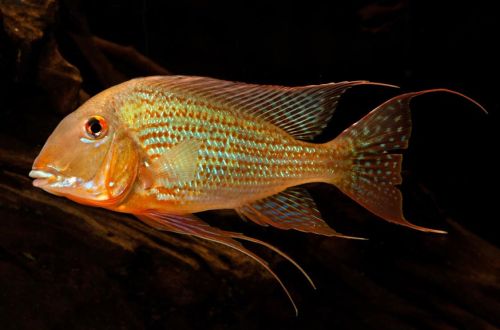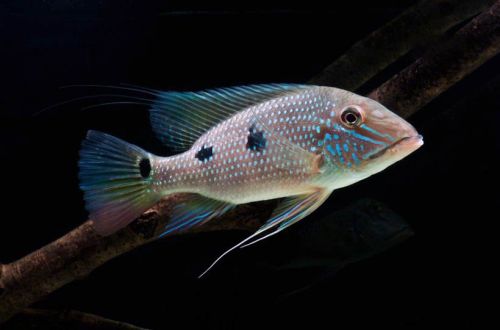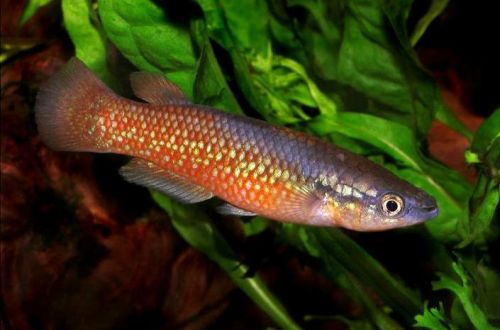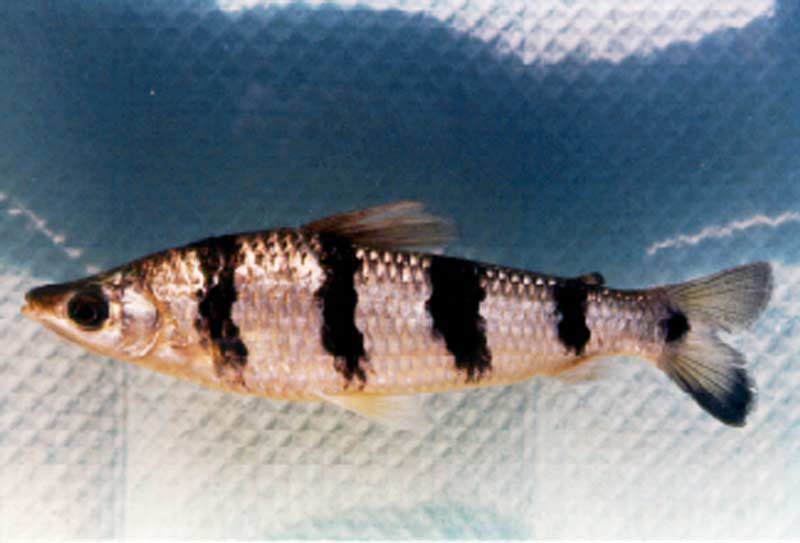
schizodon striped
The striped schizodon, scientific name Schizodon fasciatus, belongs to the family Anostomidae (Anostomidae). The fish is native to South America, found from the headwaters of the Amazon River to its coastal areas at the confluence with the Atlantic Ocean. Such a wide natural habitat is due to regular migration.
Contents
schizodon striped
 Striped schizodon, scientific name Schizodon fasciatus, belongs to the family Anostomidae (Anostomidae)
Striped schizodon, scientific name Schizodon fasciatus, belongs to the family Anostomidae (Anostomidae)
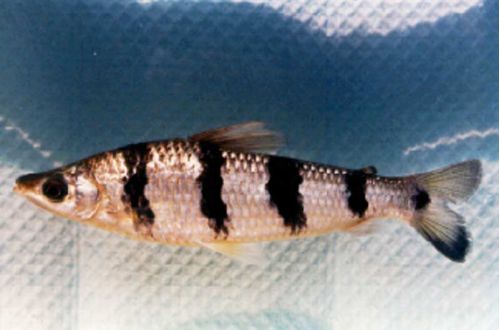
Description
Adults can reach up to 40 cm in length. The coloration is silvery with a pattern of four wide vertical black stripes and one dark spot at the base of the tail. Sexual dimorphism is weakly expressed. Males and females have few visible differences.
Sexual maturity is reached when reaching 18–22 cm. However, reproduction in the artificial environment of aquariums is difficult, since in nature spawning is preceded by a long migration.
Behavior and Compatibility
Prefers to be in a group of relatives. Calmly reacts to the presence of other peace-loving species of comparable size. However, smaller tankmates may be attacked if all fish are in cramped conditions. Good compatibility is achieved with large catfish, for example, from among the Loricaria catfish.
Food
In a number of sources they are classified as omnivores. However, in the wild, plant debris, leaf litter, algae, and aquatic plants form the basis of the diet. Accordingly, plant-based foods, soft fruit pieces, lettuce, etc., are recommended in the home aquarium.
Brief information:
- The volume of the aquarium – from 500 liters.
- Temperature – 23-27°C
- Value pH — 6.2–7.0
- Water hardness – 3–12 dH
- Substrate type – any
- Lighting – subdued, moderate
- Brackish water – no
- Water movement – moderate
- The size of the fish is up to 40 cm.
- Nutrition – plant-based feed
- Temperament – conditionally peaceful
- Keeping in a group of 5-6 individuals
Maintenance and care, arrangement of the aquarium
The optimal size of the aquarium for a group of 5-6 fish starts from 500 liters. The design is arbitrary if there are open areas for swimming. When choosing plants, it is worth giving preference to species with hard leaves.
You can also select suitable species by using the filter in the “Aquarium plants” section by checking the box “Able to grow among herbivorous fish”.
Relatively easy to maintain if it is possible to purchase a large tank with appropriate equipment. It is important to maintain a stable hydrochemical composition of water within a comfortable temperature range. Maintenance is standard and includes regular removal of accumulated organic waste and weekly replacement of part of the water with fresh water.



